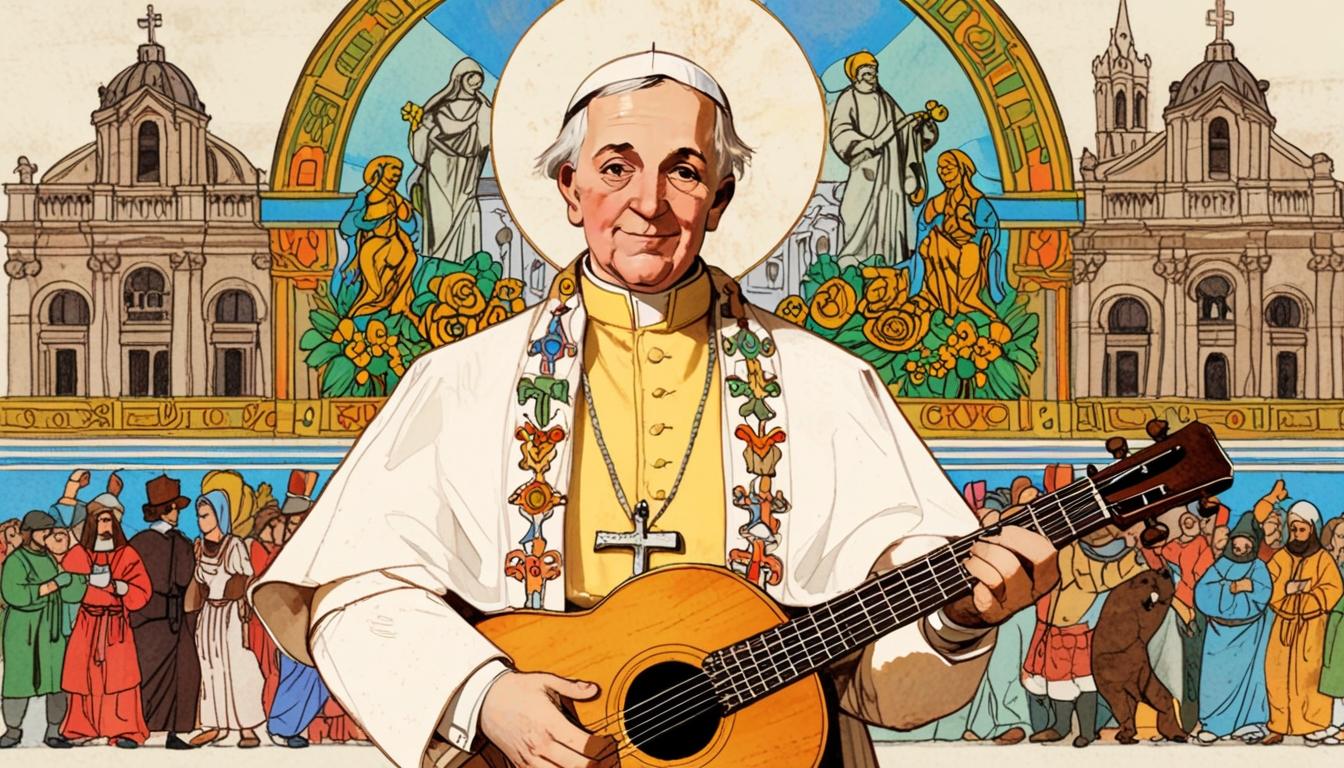Brónagh Diamond, a writer and stand-up comedian hailing from west Belfast, offers a captivating reflection on her recent experiences in the United States, juxtaposing her observations of American absurdities with the quirky charm of her Irish roots. As she navigated the lively streets of San Francisco, Diamond found comfort and continuity in The Irish News, a lifeline that kept her attuned to the goings-on back home amid a sea of eccentric characters.
In the vibrant Tenderloin district, she was particularly struck by the contrasting personalities she encountered, such as those curiously engaging with the world around them in unique and often bewildering ways. She humorously suggests that the atmosphere, riddled with both charm and chaos, could inspire a multitude of online narratives that many, including herself, would rather explore from a safe distance.
Amongst her musings, Diamond directed her attention to the recent election of Pope Leo XIV, an imaginative figure that fuses the political savvy inherent to Chicago with the serene humility of a Peruvian missionary. This whimsical portrayal of the pontiff allows for speculation regarding potential shifts in the Vatican’s approach to contemporary issues. The newly elected Pope could herald a much-needed refreshment of Sunday Mass, perhaps appealing to younger audiences with a blend of upbeat hymns reflective of both Chicago’s gospel tradition and Peruvian folk music.
The prospect of changed church dynamic is particularly salient against the backdrop of declining Mass attendance in Ireland. Diamond's previous commentary on this phenomenon highlights how the Church’s traditional methods fail to resonate with the modern faithful, a sentiment echoed by many who long for a connection that feels relevant to today’s societal landscape. If the new Pope brings his unique blend of charisma and compassion, it might cultivate a dialogue aimed at addressing pressing issues such as poverty and inequality with the fervour comparable to a rallying political movement.
Drawing on the rich tapestry of the Irish-American experience, particularly in Chicago, Diamond suggests that the new pontiff could even bridge conversations between diverse communities, including Irish-American Trump voters grappling with complex immigration narratives. The interplay of these identities and experiences creates a fertile ground for interfaith dialogue, possibly redefining how various demographics perceive the church and its role in addressing societal challenges.
The imagined papacy may also reignite a youthful enthusiasm for religion, which could serve as a counterbalance to the waning engagement noted by many in Ireland. Church leadership informed by members with Chicago roots could inject fresh perspectives into Vatican policy, potentially reshaping church strategies to ensure they align more closely with contemporary values and lifestyles. These changes, if enacted, would not only address the decline in Mass attendance but might also foster a renewed sense of community and purpose within the Church.
Amidst the complexity of modern issues, Diamond’s light-hearted yet thought-provoking narrative invites readers to consider the potential for meaningful transformation within the Catholic Church. As the world continues to grapple with its myriad challenges, the arrival of a Pope who embodies both Chicago’s depth and Peru’s humility may herald a new era—one where faith transforms not just spiritual lives, but also community engagement and social justice efforts. In this imaginative landscape, the possibilities are as limitless as the spirit of those who dare to dream and engage.
Reference Map
- Paragraph 1: Summary (2)
- Paragraph 2: Summary (2)
- Paragraph 3: Summaries (3), (4)
- Paragraph 4: Summaries (3), (5)
- Paragraph 5: Summary (4)
- Paragraph 6: Summary (5)
- Paragraph 7: Summary (3)
- Paragraph 8: Summary (4)
Source: Noah Wire Services
